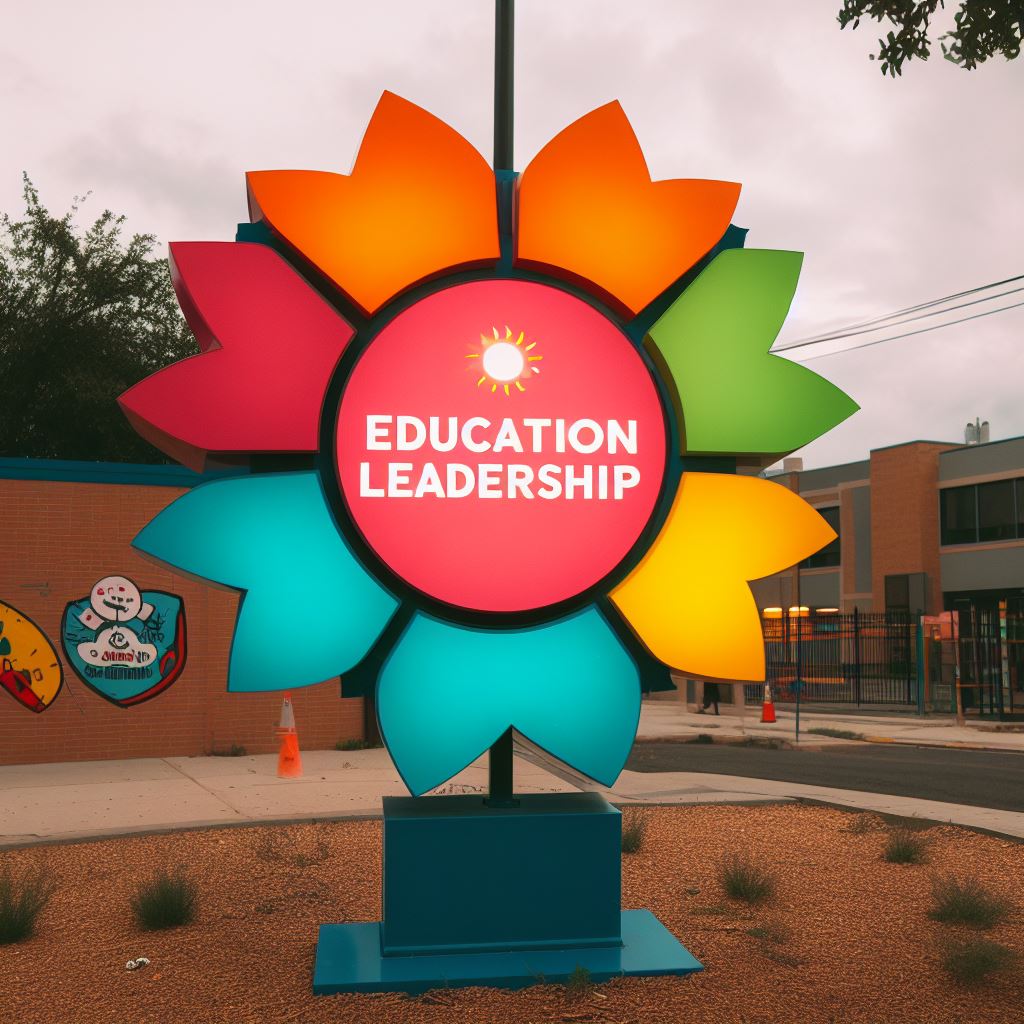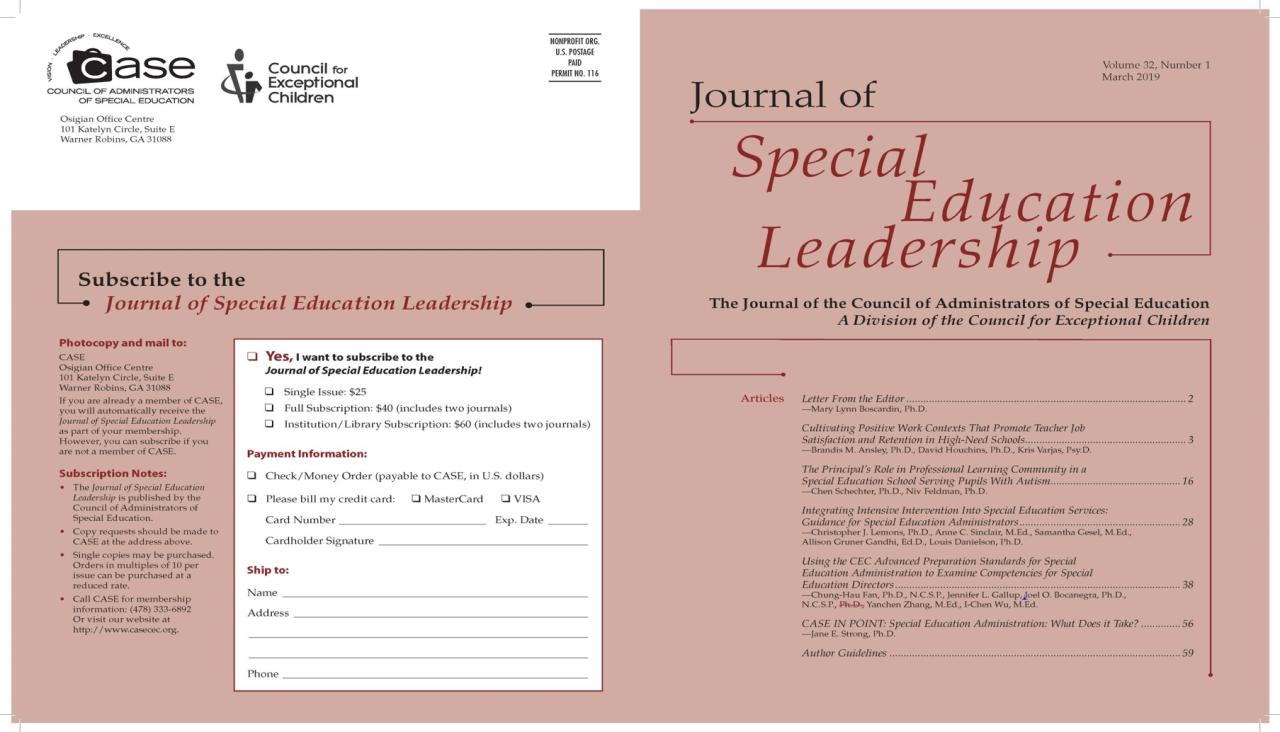Leadership in special education is a multifaceted and crucial role that shapes the educational experiences of students with disabilities. As leaders in this field, we are entrusted with the responsibility of creating inclusive and supportive learning environments, advocating for the needs of our students, and driving data-informed decision-making.
Join us as we delve into the intricacies of leadership in special education, exploring best practices, challenges, and strategies to empower our students and foster their success.
In this comprehensive guide, we will navigate the essential elements of leadership in special education, empowering you with the knowledge and skills to effectively lead and advocate for students with disabilities. Through practical examples, research-based strategies, and thought-provoking insights, we aim to equip you as a transformative leader in the field of special education.
Leadership Styles and Approaches

Leadership styles and approaches significantly impact the effectiveness of special education programs. Different leadership styles can have varying effects on student outcomes, teacher morale, and the overall school climate.
Leadership in special education demands a specialized skill set. If you’re looking to enhance your leadership abilities in this field, consider workplace leadership training programs. These programs provide invaluable insights into effective leadership practices and can help you develop the skills necessary to lead teams in special education settings.
Types of Leadership Styles
- Transformational Leadership:This style focuses on inspiring and motivating individuals to achieve exceptional results. Transformational leaders create a shared vision, empower others, and foster a culture of innovation and collaboration.
- Transactional Leadership:This style emphasizes clear expectations, rewards, and punishments. Transactional leaders set goals, monitor performance, and provide feedback to guide individuals toward desired outcomes.
- Servant Leadership:This style prioritizes the needs of others. Servant leaders focus on empowering and supporting their team, creating a positive and supportive work environment.
Impact on Student Outcomes
Leadership styles can significantly influence student outcomes in special education. For example, transformational leadership has been linked to improved academic achievement, higher graduation rates, and increased student engagement. Transactional leadership can help maintain order and ensure accountability, but may limit creativity and innovation.
Servant leadership fosters a supportive environment that can enhance student well-being and self-esteem.
Examples of Successful Practices, Leadership in special education
- Visionary Leadership:Leaders who establish a clear and compelling vision for the future of special education, inspiring others to work towards shared goals.
- Empowering Leadership:Leaders who delegate authority, provide support, and encourage collaboration among team members, fostering a sense of ownership and responsibility.
- Data-Driven Leadership:Leaders who use data to inform decision-making, monitor progress, and identify areas for improvement, ensuring that programs are responsive to student needs.
Role of Leadership in Creating Inclusive Environments

Leaders play a pivotal role in cultivating inclusive school environments where every student feels valued, respected, and supported. They foster a culture of understanding, acceptance, and collaboration among all stakeholders.
Strategies for Promoting Inclusivity
Leaders can implement strategies to promote collaboration and understanding among diverse stakeholders, such as:
- Establishing clear expectations and policies that prioritize inclusion.
- Providing professional development opportunities for staff on inclusive practices.
- Creating opportunities for students with disabilities to interact and socialize with their peers.
- Encouraging open communication and feedback from all stakeholders.
- Establishing a welcoming and accessible environment for all.
Impact of Inclusive Environments
Inclusive environments have a profound impact on student engagement and achievement. When students feel included and supported, they are more likely to:
- Engage in learning and participate in class.
- Develop positive relationships with their peers and teachers.
- Experience a sense of belonging and well-being.
- Achieve academic success and reach their full potential.
Leadership in Advocating for Special Education Needs

Leaders play a pivotal role in advocating for the needs of students with disabilities. They must ensure that these students have access to the resources and support they need to succeed academically and socially.
Effective advocacy strategies include:
- Building relationships with parents, educators, and community stakeholders
- Educating others about the needs of students with disabilities
- Developing policies and procedures that support students with disabilities
- Advocating for funding and resources for special education programs
Challenges and Opportunities
Leaders face challenges in advocating for special education services, including:
- Limited funding and resources
- Lack of understanding about the needs of students with disabilities
- Resistance from some stakeholders
Despite these challenges, leaders have opportunities to make a positive impact on the lives of students with disabilities. By advocating for their needs, leaders can help ensure that these students have the opportunity to reach their full potential.
Leadership in special education is a complex and demanding role, requiring specialized knowledge and skills. For those looking to enhance their leadership abilities in this field, pursuing a masters in educational leadership and administration can provide the necessary foundation. This degree program equips individuals with the knowledge and skills to effectively lead special education programs, ensuring that students with disabilities receive the support and services they need to succeed.
Leadership in Data-Driven Decision Making: Leadership In Special Education

In special education, data-driven decision-making empowers leaders to make informed choices that enhance student outcomes. By collecting and analyzing data, leaders can identify areas for improvement, tailor interventions, and monitor progress towards goals.
To implement data-driven decision-making, leaders should establish systems for data collection, analysis, and interpretation. This includes gathering data from multiple sources, such as student assessments, attendance records, and discipline reports.
Strategies for Collecting and Analyzing Data
- Conduct regular student assessments to track academic progress and identify areas where students need additional support.
- Monitor attendance and discipline data to identify patterns and address any underlying issues that may be impacting student learning.
- Use data visualization tools to create charts and graphs that illustrate data trends and patterns.
- Engage in data analysis with stakeholders, including teachers, parents, and administrators, to gain diverse perspectives and make informed decisions.
Impact of Data-Driven Decision-Making on Student Outcomes
- Improved student achievement: Data-driven decisions allow leaders to target interventions and resources to areas where students need the most support.
- Increased accountability: Data provides a basis for evaluating the effectiveness of interventions and holding schools accountable for student outcomes.
- Enhanced communication: Data can be used to communicate with parents, teachers, and administrators about student progress and areas for improvement.
- Informed decision-making: Data empowers leaders to make evidence-based decisions that are tailored to the specific needs of their students.
Leadership in Building Capacity and Collaboration

Effective leadership is crucial for fostering capacity building and collaboration among stakeholders in special education. Leaders play a pivotal role in developing staff competencies, fostering a collaborative culture, and harnessing the collective expertise of the school community to improve student outcomes.
To build capacity, leaders can implement strategies such as providing professional development opportunities, mentoring and coaching programs, and creating a culture of reflective practice. These initiatives empower staff with the knowledge, skills, and confidence to meet the diverse needs of students with disabilities.
For those who aspire to lead in the field of special education, pursuing a phd leadership studies online can provide the advanced knowledge and skills necessary to excel in this demanding role. By gaining a deep understanding of leadership theories and best practices, individuals can effectively navigate the challenges and complexities inherent in special education settings, empowering them to create inclusive and supportive learning environments for all students.
Fostering Collaboration
Fostering collaboration involves creating a shared vision and goals, establishing open communication channels, and promoting teamwork. Leaders can facilitate regular meetings, establish collaborative planning teams, and encourage cross-disciplinary partnerships. By breaking down silos and fostering a sense of community, leaders create an environment where stakeholders work together seamlessly to support students.
Impact on Student Outcomes
Building capacity and collaboration has a profound impact on student outcomes. When staff are well-equipped and work collaboratively, they can provide more effective and individualized instruction, create a more supportive and inclusive learning environment, and improve communication with families. These factors contribute to increased student engagement, academic achievement, and social-emotional development.
Ending Remarks

As we conclude our exploration of leadership in special education, it is imperative to recognize the profound impact that effective leadership has on the lives of students with disabilities. By embracing inclusive practices, advocating for their needs, and utilizing data-driven decision-making, we can create transformative learning environments that empower our students to reach their full potential.
The journey of leadership in special education is an ongoing one, requiring continuous learning, collaboration, and a unwavering commitment to equity and excellence. Let us continue to strive for a future where every student with disabilities has access to the opportunities and support they need to thrive.
Query Resolution
What are the key leadership styles in special education?
Transformational, instructional, democratic, and servant leadership are common leadership styles in special education.
How can leaders promote collaboration among stakeholders in special education?
Leaders can foster collaboration through effective communication, shared decision-making, and building a culture of trust and respect.
What are the challenges leaders face in advocating for special education services?
Limited resources, lack of understanding, and systemic barriers can challenge leaders in their advocacy efforts.
How does data-driven decision-making improve student outcomes in special education?
Data analysis helps leaders identify areas for improvement, personalize instruction, and track student progress, ultimately enhancing student outcomes.
What are the benefits of capacity building and collaboration in special education?
Capacity building and collaboration empower stakeholders, improve service delivery, and create a more supportive learning environment for students with disabilities.